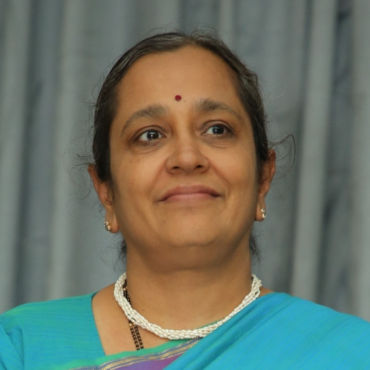
Dr. S. SEETHA
Director, Space Science Programme Office, ISRO HQ
Bio-data:
Dr Seetha is the Director at the Space Science Programme Office at ISRO, and is therefore responsible to ensure co-ordination of all space science activities of ISRO. She is also the Principal Investigator of the ASTROSAT since April, 2011.
Her areas of research is in the field of astronomy, particularly the study of variable stars in x-ray and optical bands. She has also contributed extensively to the development of space science instrumentation for Indian science payloads. Some of them are the Gamma ray burst experiment on the SROSS series of satellites, the Indian X-ray astronomy experiment IXAE on the IRS-P3, and the Scanning Sky monitor on the ASTROSAT;
She has collaborated with over 10 countries for the Whole Earth Telescope (WET) programme.
She is a member of the International Astronomical Union, the Astronomical society of India and The Astronautical society of India. She has over 80 publications in refereed journals, has guided 5 students for Ph. D, and has taught courses on 'Astronomical Techniques' and 'High energy astrophysics' at the Indian Institute of Science at Bangalore.
Awards:
The C.V. Raman Young Scientist award in Physical Science for the year 2003.
The Best woman scientist award for the year 2012 from the Astronautical Society of India.
Member of Team excellence award of ISRO for 'AstroSat mission' for the year 2015
Distinguished Alumni award from the Old Students Association of Hindu College, Delhi, 2017
H.R. Pratibha award for women of distinctive vocation by Rotary Club downtown Bangalore 2017
Educational Summary
Dr. Seetha completed her Ph.D. in Physics from Indian Institute of Science, Bangalore, on the topic, 'White Dwarf Pulsators' ; She did her M. Sc in Physics at IIT Madras, and her B.Sc.Physics (Hons) at Hindu college, Delhi University.
Abstract:
Title: Detection of high energy electromagnetic radiation from space
We understand the processes in the Universe through the detection of both electromagnetic radiation and particles from space. The study of the cosmos in the optical band is probably as old as beginning of human species using eye as a detector. In the last century, the Universe is also being studied in other wavebands like X-rays and Gamma rays using experiments in space which has become accessible with the advent of rockets and satellites. This talk will provide some insights as to how we detect these radiation from celestial sources and how it has changed our perspective of the Universe.
